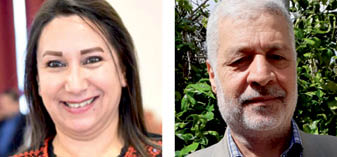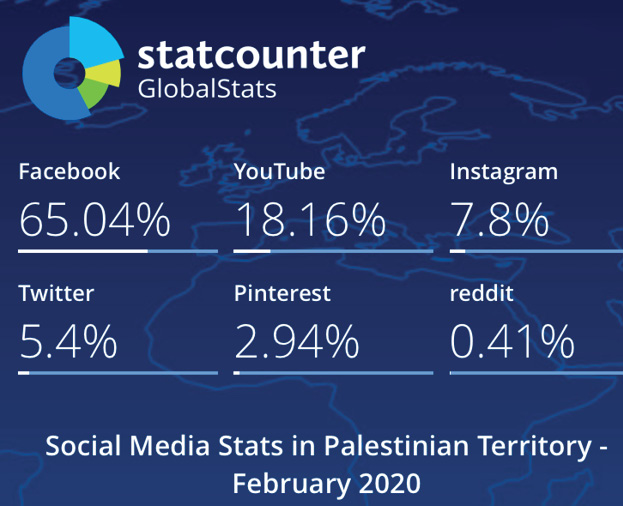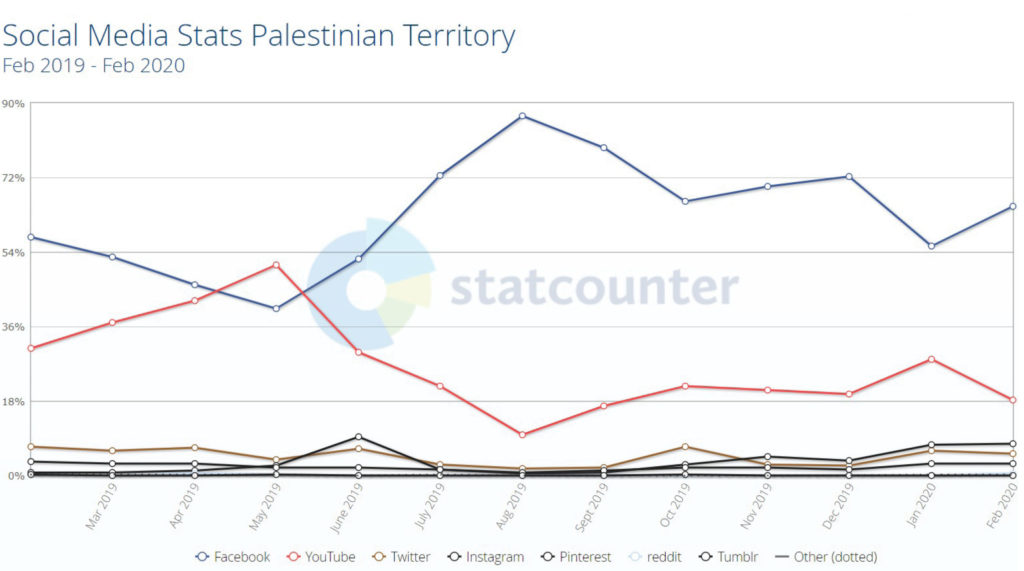Throughout history, pandemics such as the plague and various kinds of influenza have greatly affected societies and politics. Currently, the world is struggling to control the highly contagious coronavirus disease COVID-19. The first case was reported to the WHO country office in China in late December 2019 and is characterized primarily by fever, cough, and shortness of breath. In March 2020, the World Health Organization (WHO) declared COVID-19 a pandemic. The aim of this paper, in addition to giving an overview of the history of pandemics in the Levant, is to present a brief analysis of Palestinian perceptions of and reactions to COVID-19. Results will be used to either affirm the current measures and messages of the government or to suggest modifications.
A look into the history of diseases shows that one of the earliest pandemics to be reported in the Eastern Mediterranean region, affecting particularly its ports, was the Plague of Justinian (541–542 AD), believed to have originated from the Qinghai province in China,*1 that killed a quarter of the Eastern Mediterranean population.*2 Frequent waves of the plague occurred during the sixth, seventh, and eighth centuries. Among them was the Plague of Amwas (639 AD) that originated from the little town of Amwas, located between Al-Ramlah and Jerusalem and destroyed by Israeli occupation forces in 1967. This plague spread throughout Bilad Al-Sham (Greater Syria) and led to the death of 25,000 people. It is well-known in Islamic history, as it led to the deaths of many companions of Prophet Muhammad.*3
In 1799, two months after the siege of Acre, the Plague of Acre erupted among the French soldiers who were led by Napoleon Bonaparte. Poor sanitation and crowdedness causing the rapid spread of infection which led to the death of about 2,000 French soldiers and forced Napoleon to withdraw to Egypt. This is an example of how an outbreak changed the history of the region.*4 In late 1811, Acre was hit by another outbreak of the plague that lasted throughout 1812. It is believed that this plague originated in Astanah, the Ottoman capital, when a woolen coat was given to a Jewish resident of Acre and later worn by his son, leading to his infection and the infection of eight of his relatives. Initially kept a secret, the plague then spread through all of Acre*5 and is estimated to have killed around 120 people a day over a period of seven months.
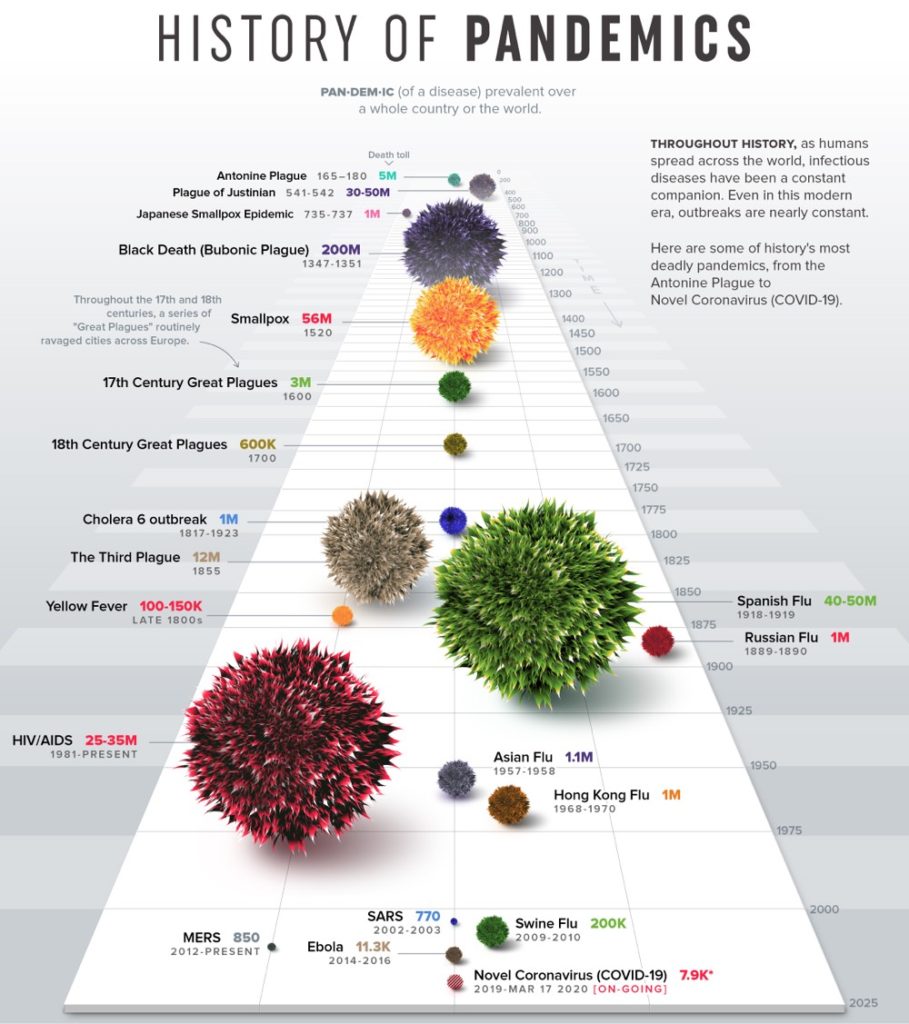
Several influenza pandemics have erupted throughout history. Among them, the Spanish Flu had a particularly devastating effect. It was first reported by Spanish media in 1918 and subsequently spread throughout the entire world. Palestine was hit by the second wave of this pandemic in September 1918, with Jaffa being the first point of its entry on the Levantine coast. The virus was brought in by British ships from Alexandria or Port Said. Around 500,000 people from the Levant, most of them young, died.*6 Other flu outbreaks declared as pandemics and affecting the Middle East were the Asian Flu (1957–1958) and the Hong Kong Flu (1968–1969), both of which led to the death of around 1 to 4 million people worldwide.*7 Most recently, the swine flu pandemic of 2009–2010 caused the death of anywhere between 151,700 and 575,400 people worldwide.*8
Community reactions to pandemics throughout history have varied in type and severity. Quarantine was a safety precaution commonly taken by people in the old days. During the Amwas Plague, Muslims followed the advice of Prophet Muhammad who instructed them not to enter or leave an area where the plague was spreading. Similar reactions were observed at the time of Plague of Acre when wealthy families isolated themselves in their homes, not interacting with affected people, and thus helping to limit the spread of the disease. Knowing the nature of the plague and understanding where it mostly spread led Islamic leader Amr Ibn Al-As to move his people to the mountains where fresh air was available, an action that helped control the spread of the Plague of Amwas.
Since the creation of humans, people have tried to explain the occurrence of illness. According to the miasma theory, accepted in Europe and China until the late 1800s, illness resulted from breathing polluted air. Germ theory linked diseases to germs, and humanity has investigated genetics, behavior, and nutrition in efforts to understand how they can be linked to poor health.
Panic has been observed as a reaction to all pandemics. Although a human trait, it reflects a lack of trust and ignorance and frequently leads to acts of selfishness. Stigmatization is another common phenomenon. During the Plague of Acre, people buried the deceased early in the morning, before sunrise, secretly and without announcing the death or its cause. Currently, we are observing similar behavior as people are refusing to admit that they contracted the disease, fearing stigmatization. Unfortunately, during pandemics, myths abound. During the Plague of Acre, for example, people used to light incense in the belief that it would dispel the plague and provide protection.
Reflecting modern approaches to the combat of disease, the Palestinian Public Health Law was approved by the Palestinian Legislative Council on December 22, 2004. It defines an infectious disease as “any disease that may spread to other humans in any possible way.” An epidemic is defined as “the spread of an infectious disease in an uncontrolled manner, threatening public health.” *9
Chapter three of the Public Health Law includes seven articles that outline how to combat infectious diseases. Article 9 puts the responsibility of this task on the Ministry of Health (MoH). Article 10 talks about precautionary measures to be taken in order to stop the spread of disease at an individual level. Article 11 reflects on the notification that must be made in case of the presence of an infectious disease, whereas Article 12 determines who is responsible for notification and outlines the process of how to go about it. Article 13 talks about isolation and treatment that should be free of charge once it is available. Article 14 indicates that the MoH is the official body responsible for imposing quarantine throughout Palestine, and Article 15 presents the precautionary measures that should be taken by the MoH to prevent the spread of infectious disease in and from Palestine.*10
Facebook is the main platform used by the public, politicians, economists, and health care providers alike to share information, post opinions, and discuss the issues surrounding the current outbreak of COVID-19. Since the disease erupted in China, we have observed many posts that illustrate people’s perceptions of this virus. The following review limits its focus to the public perceptions of COVID-19 in Palestine, as posted on Facebook when the virus caused casualties and prompted drastic measures in China and again when the virus started spreading to other regions, particularly Arab countries.
Initially, many posts considered the virus God’s punishment of China for its ill-treatment of the Uyghur Muslim minority. As the virus started to spread to other countries, the posts started to blame the general trend of moving away from God as the main reason for God’s punishment of humanity. Some posts were against linking religion with the eruption of COVID-19 and called for not mixing religion with myths. “Only science can serve humanity [in this case],” someone wrote.
When COVID-19 began to spread, most people did not take it seriously. Some made light of the situation, as in the following imaginary dialogue between two lovers: “No touching, no kissing, we will not spread the virus.”
With the virus spreading to other countries, humor became a way to alleviate the stress that people were experiencing. For example: “The number of those on lockdown because of the spread of rumors exceeds the number of those on lockdown because of COVID-19.” Other Facebook posts included: “Pray for married men who are locked down at home, they are probably being interrogated by now.” And this one: “I used to love it when she sneezed; now I panic!” The intense use of disinfectants was also a source of humor: “Haven’t you noticed that our lives are becoming similar to that of cockroaches? Whenever we are seen, we are sprayed with disinfectant; we might as well lie down on our backs like cockroaches.” Safety was another topic: “Don’t visit us, and we won’t visit you.”
With Facebook serving as the main platform to exchange information and opinions, posts can be roughly categorized under six main themes: religion, society and fun, the economy, fear and panic, awareness, and politics.
Several posts discussed the status of the global economy and the negative effect of COVID-19. “The global economy is reaching the edge; there will be a new global system. Powerful countries will use every means to be part of it, and they won’t care about how many lives will be lost in the process.”
Some posts brought up the issue of conspiracy, such as this one: “Did China fool the world to save its own economy? This is what the Americans and the Europeans thought after they sold their shares in the IT companies to the Chinese government at low prices.” And again: “I believe that this virus is man-made and aims to destroy the global economy and then to forge close cooperation between the two largest economies, the United States and China.”
Many Facebook posts reflected fear, panic, and stigma: “Today, while I was waiting in line with others, I had to repeatedly suppress my cough so as to not alarm anyone around me. In the age of corona, we now hide our coughs.” Or another post by a person who suffers from allergies: “In the age of corona, I wish to write on my forehead: hey, people, do not panic when I cough; I suffer from allergies.” Another post on panic and fear due to the spread of COVID-19: “It hits the sensation centers of human beings; many healthy people will start hallucinating from COVID-19.” Sometimes there is a mixture of fear, panic, and concern: “The world is standing at attention and panicking. It seems that civilization is breaking down, yet we are not taking the issue of COVID-19 seriously; as if nothing is happening around us. Billions are being spent to deal with this calamity while we act as if it does not concern us. What kind of carelessness is this?”
Plenty of awareness messages were posted on Facebook from people of all walks of life and all ages. Some simply shared the MoH’s posts that emphasized the main precautionary measures: “Stay home, wash your hands, and keep a distance.” Other posts included initiatives to keep the public positive. Videos were circulated that featured local celebrities urging and encouraging others to follow regulations and emphasizing the positive side of self-isolation. “Awareness in my community is very high. In my village, people are trying to limit physical social interaction in order to limit the chance of spreading the virus. We’re avoiding shaking hands, keeping distance between ourselves, and we’re staying home.”
During a period of quarantine, one person used his time to read more about COVID-19 and shared the following post: “In some places, such as health centers for example, and depending on temperature and humidity, COVID-19 might stay suspended in the air for a certain period of time.”
Naturally, political posts were plentiful on Facebook. Measures taken by the government were repeatedly shared. Other posts encouraged politicians to learn from the Chinese experience of how to control the spread of COVID-19: “China managed to control the disease by using science, transparency, commitment, and respect for human lives. As the virus spread, the government collected and analyzed a huge amount of data from patients, while strict adherence to governmental instructions was demanded. Artificial intelligence was also used to control the disease, all [these measures] putting the interest of public good ahead of personal rights.” There were posts that commended the measures taken by the Palestinian government, asserting that they were taken at the right and crucial time. “The precautionary measures taken by the Palestinian government to control the spread of COVID-19 are still being considered by other countries. WHO announced that the early action of the Palestinian Authority proved to be the right decision.”
The political schism between the West Bank and the Gaza Strip was highlighted in many comments, particularly the ones posted from Gaza. Here is a positive post that called for unity: “Our behavior should change. We have to put the political conflict aside. We have to be united, obey the orders [coming from the PA], and stop being suspicious. We must unite for our country and for humanity.”
Alarmingly, the vast majority of posts made by the public referred to the spread of COVID-19 as a conspiracy. This illustrates the importance of urging all governmental bodies and NGOs to work together to send the right messages to the public.
Palestinians have used Facebook very frequently in 2020. Compared to other social media tools, Facebook took the lion’s share with 65.04 percent (see attached illustration).*11 The eruption of COVID-19 prompted a large number of posts regarding the virus. During hard times, people tend to refer to religion in order to find strength. A mix of religious views were observed in the posts about COVID-19, some of them extreme, others logical, and the rest mixed with myths. We believe that policy makers should cooperate with the religious authorities in order to transmit clear messages to the public that limit conflict.
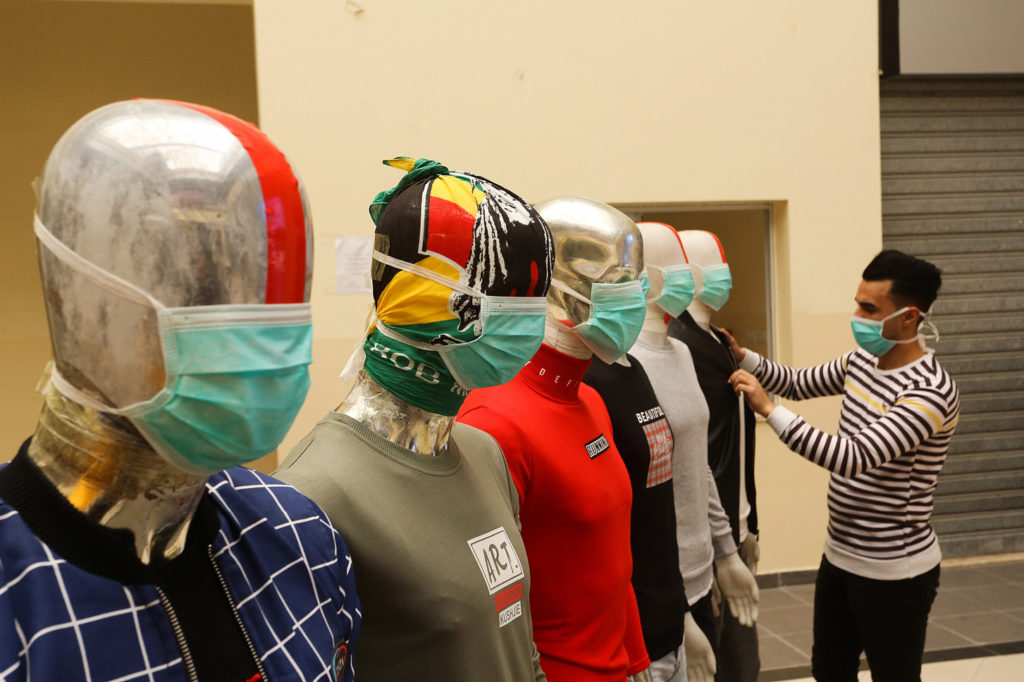
The amount of stress that the public faces, partly because some decisions were made rather rapidly, is evident from the messages that reflect confusion and bewilderment. It is obvious that some Facebook posts were written to alleviate stress, using humor to this end by illustrating funny aspects related to COVID-19. This is another message to policy makers: in spite of the serious situation, it is possible to use humor to communicate health messages. Some posts on the economy by high-profile individuals proposed solutions that would protect people’s pockets.
In times like these, collective rights are more important than individual rights, yet care must be taken to prevent authoritarian regimes from exploiting the situation by covering up violations of human rights.
Panic is a common reaction to disaster in any society; it increases if the public lacks confidence about the measures taken to control a health problem. Many posts were about panic, as can be deduced from posts about people storing food and cleaning products. But others were extremely careless, as there were even posts defying orders to stay at home and calling on others to get out and refuse isolation. We believe that issuing clear guidelines and instructions that can be passed on and followed by healthcare providers in the field will minimize the amount of panic. Psychological support as well should be available at all times and for all who need it. Politicians must continually remain on the frontline to calm people down, make sure that correct procedures are being implemented by service providers, and deal with complaints on the spot in order to secure public trust and comfort the people.
Transparency, supported by evidence, eliminates public stress and communicates the clear message that collective rights are more important than individual rights. It is very important to monitor existing surveillance systems for communicable diseases, analyze the available data, and share the results with the public in order to emphasize all measures that are taken by the government. In order to avoid confusion, it is crucial that all health messages be issued by the health education department at the Ministry of Health. Finally, all measures, including the messages to the public, should be evaluated periodically to check their efficiency and effectiveness. Any measure or message that fails its purpose must be modified or replaced.
*To follow up on the most recent news and statistics regarding the COVID-19 outbreak in Palestine, please visit http://www.emro.who.int/pse/palestine-news/landing-page-for-covid19.html.
*1 Giovanna Morelli et al (October 31, 2010), “Yersinia pestisgenome sequencing identifies patterns of global phylogenetic diversity, Nature Genetics 42 (12): 1140–1143, available at https://www.ncbi.nlm.nih.gov/pubmed/21037571.
*2 Cyril A. Mango, Byzantium: The Empire of New Rome (1980) emphasizes the demographic effects; Mark Whittow, “Ruling the late Roman and Byzantine city,” Past and Present 33 (1990), argues against too great a reliance on literary sources.
*3 Michael W Dols, “Plague in Early Islamic History,” Journal of the American Oriental Society, Vol. 94, No. 3 (July–September 1974), pp. 371–383.
*4 Steven Englund, Napoleon: A Political Life, Harvard University Press, 2005, p.133.
*5 Encyclopedia Palestina, The Plague of Akka (in Arabic), available at https://www.palestinapedia.net/%D8%B9%D9%83%D8%A7-%D8%B7%D8%A7%D8%B9%D9%88%D9%86/.
*6 Kjell Lind, “The impact of the 1918 Spanish influenza-pandemic on Greater Syria,” MA Dissertation, September 17, 2012; and J.M. Barry (2005), “The Story of Influenza–1918 Revisited: Lessons and Suggestions for Further Inquiry,” chapter in S.L. Knobler, A. Mack, A. Mahmoud, and S.M. Lemon (eds.), “The Threat of Pandemic Influenza: Are We Ready?” workshop summary (2005), The National Academies Press, p. 66, available at https://www.nap.edu/catalog/11150/the-threat-of-pandemic-influenza-are-we-ready-workshop-summary.
*7 “Report of the Review Committee on the Functioning of the International Health Regulations (2005) in relation to Pandemic (H1N1) 2009” (PDF). May 5, 2011.,p. 37. Archived (PDF) from the original on May 14, 2015. Retrieved 1 March 2015.
*8 Dawood FS, Iuliano AD, Reed C, et al. (September 2012). “Estimated global mortality associated with the first 12 months of 2009 pandemic influenza A H1N1 virus circulation: a modelling study.” The Lancet, Infectious Diseases, 12 (9): 687–95, doi:10.1016/S1473-3099(12)70121-4. PMID 22738893.
*9 Palestinian Legislative Council, Public Health Law, April 23, 2005.
*10 Ibid.
*11 Social Media Stats Palestinian Territory, Feb 2019–Feb 2020, Statcounter: GlobalStats, available at https://gs.statcounter.com/social-media-stats/all/palestinian-territory?fbclid=IwAR20vEft3hamp0QcfjgVDP96UJrwIFlJy2Ey3JD4PTQER0ZWgrI2jWnYc-w.

